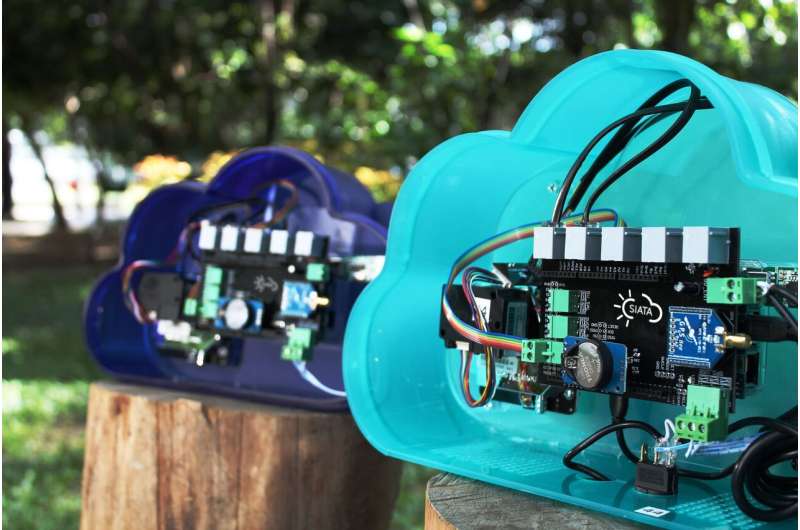Crowdsourcing pollution data could benefit public health

Wildfire smoke regularly threatens air quality over vast regions of places like California. But a new study finds a network of low-cost sensors placed in private homes could paint a more detailed picture of localized pollution, especially in areas where data on air quality is limited.
"[The low cost sensors are] unlikely to replace our reliable regulatory monitoring networks," said Ashley Collier-Oxandale, an air quality specialist from the South Coast Air Quality Management District (AQMD) who presented the study last month at the 2019 American Geophysical Union Fall Meeting. But because they take readings as often as once a minute and can be distributed widely because of their affordability, the sensors provide intricate details that might be lost with regulatory monitoring networks, she said.
Collier-Oxandale and her team distributed 400 sensors to households across 14 communities in California and collected data for over a year. The readings were collected in real-time using the participants' home Wi-Fi networks, contributing to a website that provided participants with visualizations of the data from their communities.
With the year of data, the researchers were able to show seasonal and daily trends that existed across the communities to pinpoint when high amounts of pollution were most likely. Particulate matter was typically higher at night during the winter, for example, likely because of inversions, when a layer of warm air higher in the atmosphere traps colder air near the ground that contains more particulates, the researchers said. And they found pollution spiked during weekdays, reflecting increased pollution due to rush hour traffic. The data can also be used to provide a snapshot of current pollution, which is helpful during natural disasters, according to the researchers.
"[The sensors] are particularly well-suited to detect wildfire emissions," Collier-Oxandale said. "They can provide a qualitative picture of where the plumes are and where they're going."
The team surveyed the participating households about their experience with the sensors and tested which data visualizations the participants found most useful. Calendars, for example, reflected each day's level of pollution in different color shades.

"The calendar plots are a visualization that we found resonated with community members," Collier-Oxandale said. "It seems like a very intuitive way for them to engage with the data."
The eventual goal, according to Collier-Oxandale, is for data from numerous sensors across communities to offer a complete and up-to-date picture of the extent of pollution, helping people avoid areas that are particularly hazardous. But the study also pointed out some challenges associated with sensors.
"There are many limitations," she said. The sensors are sensitive to factors like temperature and humidity, which will cause them to overestimate particulate matter concentrations. And they're particularly sensitive to high winds, which can cause them to underestimate pollution levels.
Another obstacle to data gathered from privately-owned sensors across communities is the number of different sensors that are commercially available, each with their own quirks and limitations. In this study, data was mostly collected with one type of sensor. But despite these limitations, Collier-Oxandale said the study's preliminary results are promising, adding that community members in the study were excited to have access to the localized data.
"One of our communities have paired indoor and outdoor sensors, and we found them running little experiments," she said. Some of them would, for example, use their air filters at different settings to narrow down the most efficient, lowest cost way to improve air quality in their homes.
"Community members may not live near a monitoring station, but they can put one of these outside their front door," she said. "And they're using it to make decisions like: 'Do I run outside today, or go to the gym?' They really appreciate having access to that hyper-local data."
Provided by American Geophysical Union
This story is republished courtesy of AGU Blogs (http://blogs.agu.org), a community of Earth and space science blogs, hosted by the American Geophysical Union. Read the original story here.


















